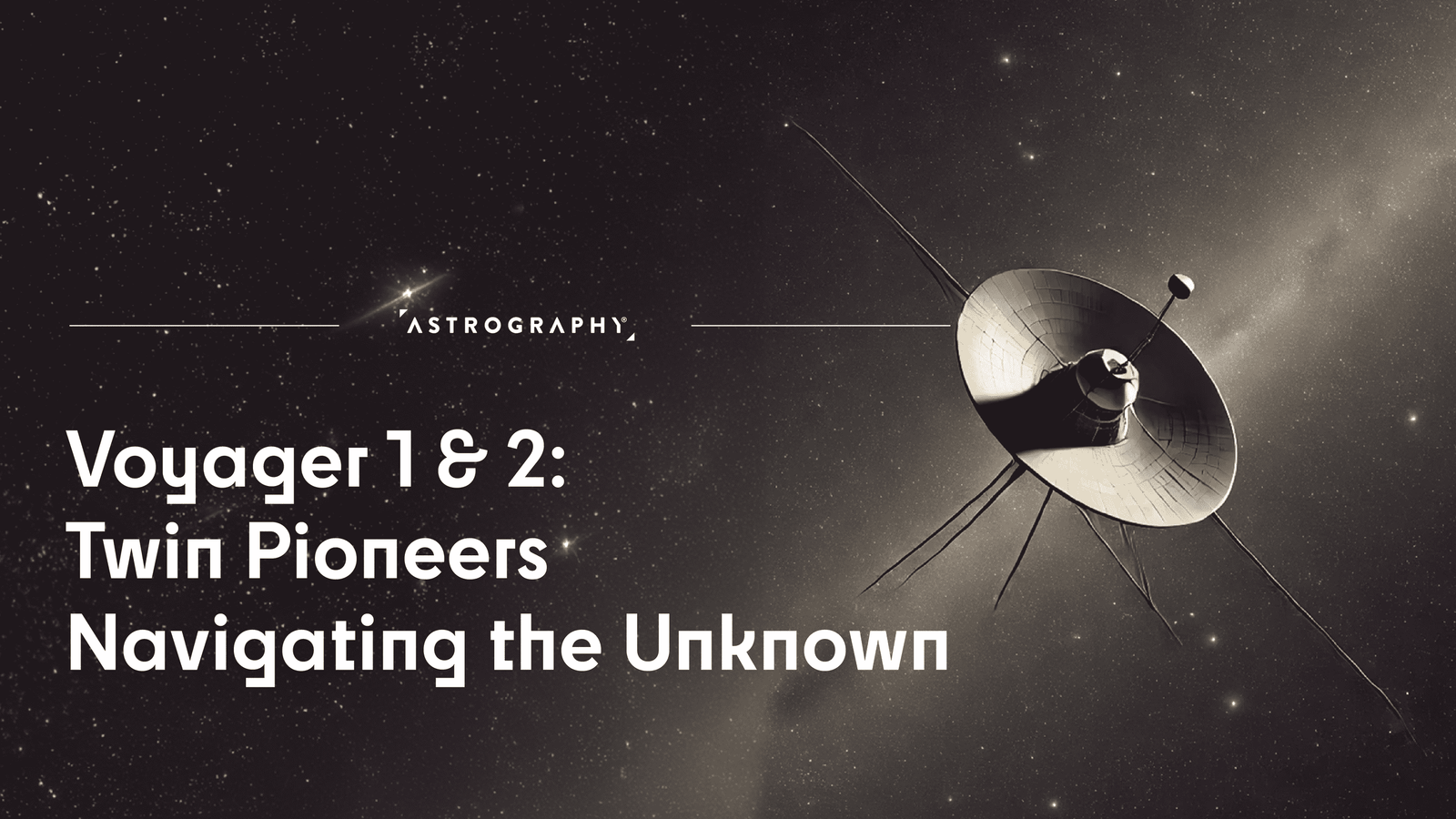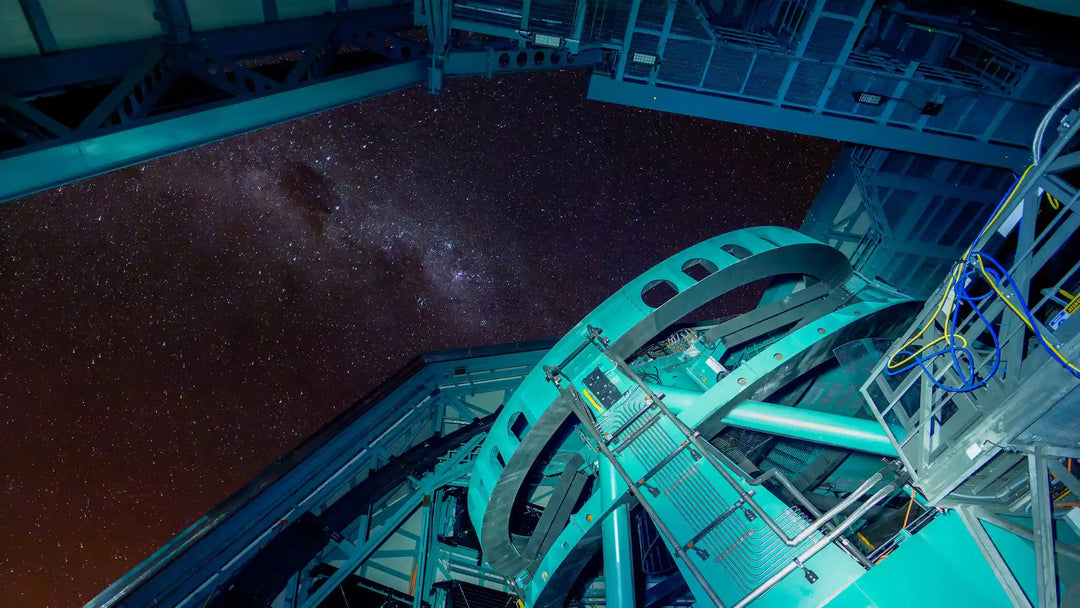Voyager 1 and 2 Probes: Humanity's Interstellar Ambassadors

The Voyager program represents one of the most ambitious and successful space exploration missions in history. Launched in the late 1970s, the twin spacecraft Voyager 1 and Voyager 2 have traversed vast distances, providing invaluable scientific data about our solar system and beyond. Their journey is not just a tale of technological triumph but also a testament to human curiosity and the relentless quest for knowledge.
Historical Context and Background
In the 1970s, NASA sought to capitalize on a rare planetary alignment that allowed for a gravitational assist trajectory, enabling a multi-planet exploration mission. This alignment, occurring once every 176 years, made it possible for a spacecraft to visit Jupiter, Saturn, Uranus, and Neptune with minimal fuel consumption.
Voyager 2 was launched first on August 20, 1977, followed by Voyager 1 on September 5, 1977. Both spacecraft were equipped with advanced scientific instruments designed to study the outer planets and their moons, as well as the heliosphere—the region dominated by the Sun's influence.
Read more about the Voyager Program.
Voyager Probes: Mission Goals and Objectives
The primary objectives of the Voyager mission included:
Conducting flybys of Jupiter and Saturn, and later Uranus and Neptune.
Collecting data on the atmospheres, magnetic fields, rings, and moons of these planets.
Sending back images and scientific data to enhance our understanding of the solar system.
Exploring the boundaries of the solar system and eventually entering interstellar space.
What are the main differences between Voyager 1 and Voyager 2's missions
The Voyager probes, launched in 1977, were designed to explore the outer planets of our solar system, but their missions have diverged significantly in terms of objectives, trajectories, and discoveries.
Launch and Trajectory
Launch Order: Voyager 2 was launched first on August 20, 1977, followed by Voyager 1 on September 5, 1977. Although Voyager 2 launched earlier, Voyager 1 was sent on a faster trajectory that allowed it to overtake Voyager 2 shortly after launch.
Flight Paths : Voyager 1's trajectory was optimized for a direct flyby of Saturn and its moon Titan, which was known for its dense atmosphere. This path took Voyager 1 out of the plane of the solar system after its encounter with Saturn, effectively concluding its planetary exploration mission. In contrast, Voyager 2 was designed to visit all four giant planets: Jupiter, Saturn, Uranus, and Neptune, making it the only spacecraft to have flown by Uranus and Neptune.


Mission Objectives and Discoveries
Primary Mission Focus : Voyager 1's primary mission focused on Jupiter and Saturn, providing critical data about these planets and their moons. It made significant discoveries, such as the active volcanism on Io and the composition of Titan's atmosphere. Voyager 2, however, was tasked with a broader mission that included detailed studies of Uranus and Neptune, where it discovered new moons and rings around both planets.
Significant Findings : While both spacecraft contributed to our understanding of the outer planets, Voyager 2's findings were particularly groundbreaking. It discovered 11 new moons around Uranus and six around Neptune, as well as the Great Dark Spot on Neptune, a massive storm similar to Jupiter's Great Red Spot.



Interstellar Missions
Entry into Interstellar Space: Voyager 1 entered interstellar space on August 25, 2012, while Voyager 2 followed on November 5, 2018. This marked a significant milestone for both probes as they began their missions in the interstellar medium, providing unique data about cosmic rays and the heliosphere.
Current Objectives: The ongoing Voyager Interstellar Mission (VIM) aims to explore the outer limits of the Sun's influence and the characteristics of interstellar space. Both probes continue to send valuable data back to Earth, although their scientific instruments differ slightly in functionality due to the different trajectories and mission extensions.

Voyager Probes: Achievements and Discoveries
The achievements of the Voyager probes are monumental:
Planetary Flybys: Voyager 1 and 2 provided the first close-up images of Jupiter, Saturn, Uranus, and Neptune. Voyager 2 remains the only spacecraft to have visited Uranus and Neptune.
Scientific Discoveries: The probes discovered active volcanoes on Jupiter's moon Io, lightning in Jupiter's atmosphere, and intricate details of Saturn's rings. They also identified new moons around each of the gas giants, significantly expanding our knowledge of these celestial bodies.
Solar System Portrait: The iconic "Pale Blue Dot" photograph taken by Voyager 1 from a distance of approximately 3.7 billion miles showcases Earth as a tiny speck in the vastness of space, a poignant reminder of our planet's fragility.
Interstellar Journey: Voyager 1 entered interstellar space on August 25, 2012, followed by Voyager 2 on November 5, 2018. They continue to send back data about cosmic rays, magnetic fields, and the density of interstellar medium.
Significance for Humanity
The Voyager missions have had profound implications for humanity:
Cultural Impact: Each spacecraft carries a Golden Record, a phonograph record containing sounds and images representing the diversity of life and culture on Earth, aimed at any potential extraterrestrial intelligence that might encounter them.
Scientific Legacy: The data collected by the Voyagers have been foundational for subsequent missions, influencing our understanding of planetary science and guiding future explorations, such as the Galileo and Cassini missions.
Inspiration for Future Generations: The success of the Voyager missions continues to inspire interest in space exploration and science, reminding us of our innate curiosity and desire to explore the unknown.
Lesser-known facts about the Voyager probes
Voyager's Sophisticated Fault Protection
Each Voyager spacecraft has a highly sophisticated computer system with seven top-level fault protection routines capable of quickly placing the probe in a safe state within seconds or minutes in case of any failures. This autonomous fault protection system is one of the most advanced ever designed for a deep space probe.
Voyager's Radiation Shielding
Both Voyagers were specifically designed and protected to withstand the intense radiation they would encounter during their Jupiter flybys. An unprotected human riding aboard Voyager 1 during its Jupiter encounter would have received a lethal radiation dose 1000 times higher than the lethal level for humans.
Voyager's Pointing Accuracy
The Voyager spacecraft can point their scientific instruments with an accuracy better than one-tenth of a degree. This is comparable to bowling a strike every time while hitting within one inch of the strike pocket. Such precision is necessary to properly center the narrow-angle cameras.
Voyager's Steady Cameras
To avoid blurring images, Voyager's cameras must be extremely steady during exposures. The spacecraft angular rates are typically 15 times slower than the motion of a clock's hour hand. At Neptune, where light levels are 900 times fainter than on Earth, engineers devised ways to make Voyager 30 times steadier than a clock's hour hand.
Voyager's Electrical Power
The electronics and heaters aboard each nearly one-ton Voyager spacecraft can operate on only 400 watts of power, about one-fourth the power used by an average residential home in the western United States.
So in summary, while the Voyagers' grand tour of the outer planets and their journey into interstellar space are well known, these lesser-known facts highlight the incredible engineering feats and attention to detail that went into designing and operating these robotic ambassadors from Earth.
Trivia About the Voyager Probes
Voyager 1 is currently the most distant human-made object in space, traveling at approximately 3.6 AU (astronomical units) per year.
18 July 2023 Voyager 2 overtook Pioneer 10 as the second farthest spacecraft from the Sun.
Voyager 2 has provided the first images of the rings of Jupiter, Uranus, and Neptune.
The Golden Records include greetings in 55 languages, music from various cultures, and sounds of nature.
The probes were designed to last five years but have far exceeded expectations, with Voyager 1 and 2 still operational after more than four decades.
Summary
Both Voyager probes were part of the same mission and shared many similarities
Their distinct trajectories and objectives have led to different scientific contributions and discoveries, enriching our understanding of the solar system and beyond.
The Voyager probes stand as a remarkable achievement in human exploration, symbolizing our quest to understand the universe and our place within it.
As they continue their journey into the cosmos, they carry with them the hopes and dreams of humanity, serving as ambassadors of Earth to the stars.
FAQ section: You Ask, We Answer
How far are Voyager 1 and 2 from Earth?
As of now, Voyager 1 is over 14 billion miles (approximately 23 billion kilometers) from Earth, while Voyager 2 is about 12 billion miles (approximately 19 billion kilometers) away.
How are Voyager probes powered?
Both Voyager probes are powered by radioisotope thermoelectric generators (RTGs), which convert heat released by the decay of plutonium-238 into electricity.
Does Voyager 2 have a camera?
Yes, Voyager 2 is equipped with a camera and has taken numerous images of the planets and their moons during its flybys.
Can Voyager 2 talk?
Voyager 2 does not "talk" in the conventional sense, but it transmits data back to Earth using radio signals.
Are Voyager 1 and 2 still transmitting?
Yes, both Voyager probes are still transmitting data back to Earth, although the signals are weak and take a long time to reach us.
When were Voyager 1 and 2 launched?
Voyager 2 was launched on August 20, 1977, and Voyager 1 followed on September 5, 1977.
What have Voyager 1 and 2 discovered?
They have discovered e.g. active volcanoes on Io, lightning on Jupiter, detailed images of Saturn's rings, and new moons around each of the gas giants.
How far is Voyager 2 in light years?
Voyager 2 is approximately 0.002 light years away from Earth.
How fast do Voyager probes travel?
Voyager 1 travels at about 38,000 miles per hour (61,000 kilometers per hour), while Voyager 2 travels slightly slower at about 34,000 miles per hour (55,000 kilometers per hour).
Why was Voyager 2 launched first?
Voyager 2 was launched first to take advantage of the optimal trajectory for a gravitational assist from Jupiter, which would allow it to reach the outer planets efficiently.
When did Voyager 2 leave the solar system?
Voyager 2 crossed the heliopause and entered interstellar space on November 5, 2018. Voyager 1 entered interstellar space on August 25, 2012.
When will Voyager 1 and 2 "die"?
Both spacecraft are expected to continue operating until around 2025 to 2030, depending on their power levels and the functionality of their instruments.










![Vera C. Rubin Observatory: Revolutionizing Astronomy Through the World's Most Advanced Telescope [All You Need To Know]](http://astrography.com/cdn/shop/articles/vera-c.-rubin-observatory_main.webp?v=1751627507&width=1080)

Leave a comment